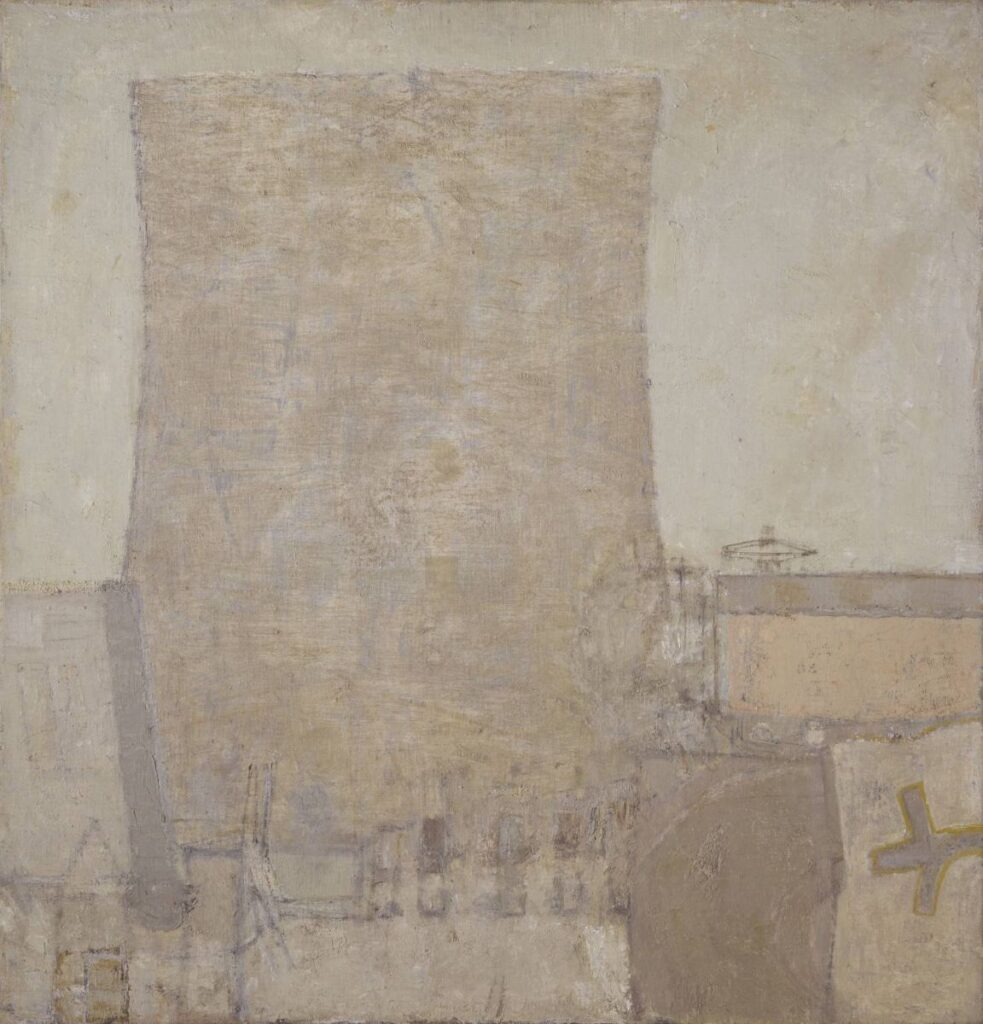
Now one of Britain’s most respected post-war painters, Prunella Clough developed a highly personalised visual language that hovered between abstraction and figuration. Best known for her paintings, which give unique views of everyday, mostly urban, landscapes derived from her London environment, set these against soft, indeterminate backgrounds. She also made prints and created assemblages of collected objects, the extent of which only became clear when they were discovered in her studio after her death.
The James Hyman Gallery website contains Clough’s interesting own thoughts about her work.
At Chelsea Art College, Clough took classes with Henry Moore, and during the 1950s, she became close friends with the painter and critic John Berger. The pair would go drawing together in the marshalling yards at Willesden Junction. Clough paid regular visits to factories and industrial sites, resulting in many paintings of men and women at work on building sites, together with images of power stations, electrical plants and chemical works.
In her work Cooling Tower II of 1958 (above), the imposing tower structure has been simplified to its most basic form. It dominates the sky and dwarfs the smaller crane feature sitting to its right. However, the emphatic horizon line, characteristic of Clough’s work, checks the overwhelming presence of the tower and balances the composition which tends towards abstraction.
However, while her work may often appear abstract, she felt her subject matter was essentially based on some kind of observation and that nothing she did was ‘abstract’. She could locate all the ingredients of her paintings in the richness of the outside world. She used a variety of tools and materials to apply paint to her canvas and sometimes mixed textured materials like sand into her paint.

Clough regularly worked in Suffolk throughout her career. The coastal landscape, a quarry and local fishermen provided significant subjects. Her early painting, Lowestoft Harbour, shown here, was exhibited by the Arts Council to coincide with the 1951 Festival of Britain and shows two fishermen weighing a catch of fish.
The ArtUK website has more about this painting and the artist generally.
Clough generally worked in a conventional manner and with orthodox materials. She made detailed preparatory studies for her paintings which she built up with layers of paint. Her creative stages included aspects of observation, filtered memory, accumulated understanding and hands-on experimentation with materials. She claimed that landscape was the root of her imagery. All her painted forms, no matter how strange or ambiguous, were derived from observation or memory of landscape. She even manages to flatten and texture her cooling tower in Cooling Tower II to resemble a rough-hewn rock face.
Explore a larger selection of her paintings and prints here, at ArtUK.

Clough often presents us with a visual puzzle when untangling and decoding her enigmatic forms. Forest Floor of 1988, shown here, results from the scraping away of paint as much as adding it. The resultant dark, curious, organic outlined shapes rising up from the lower edge of the composition suggest a quarry. She has capitalized on chance marks and harnessed accidental smudges, stains and smears transforming them into landscape elements. Occasionally a luminous colour sings out in contrast from the shadowy, jumbled forms.
To learn even more about Prunella Clough, click here.